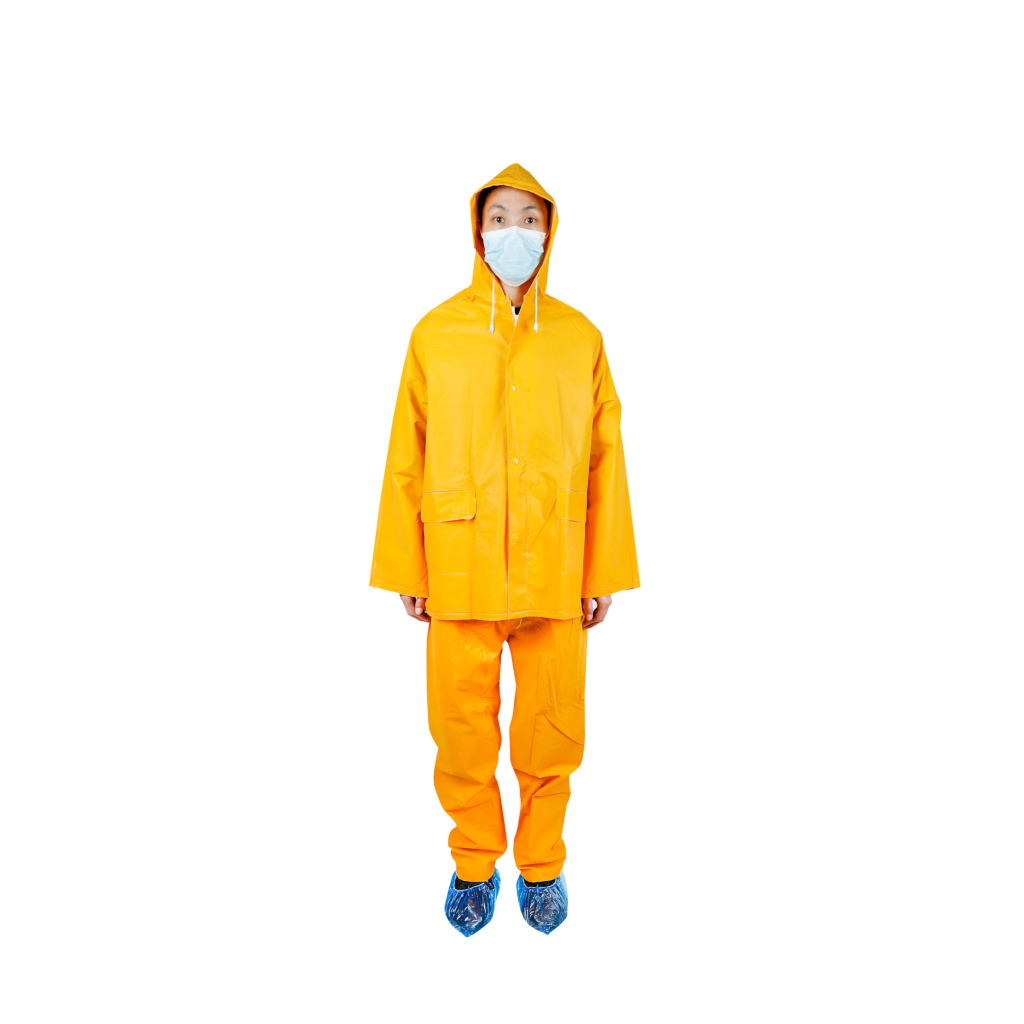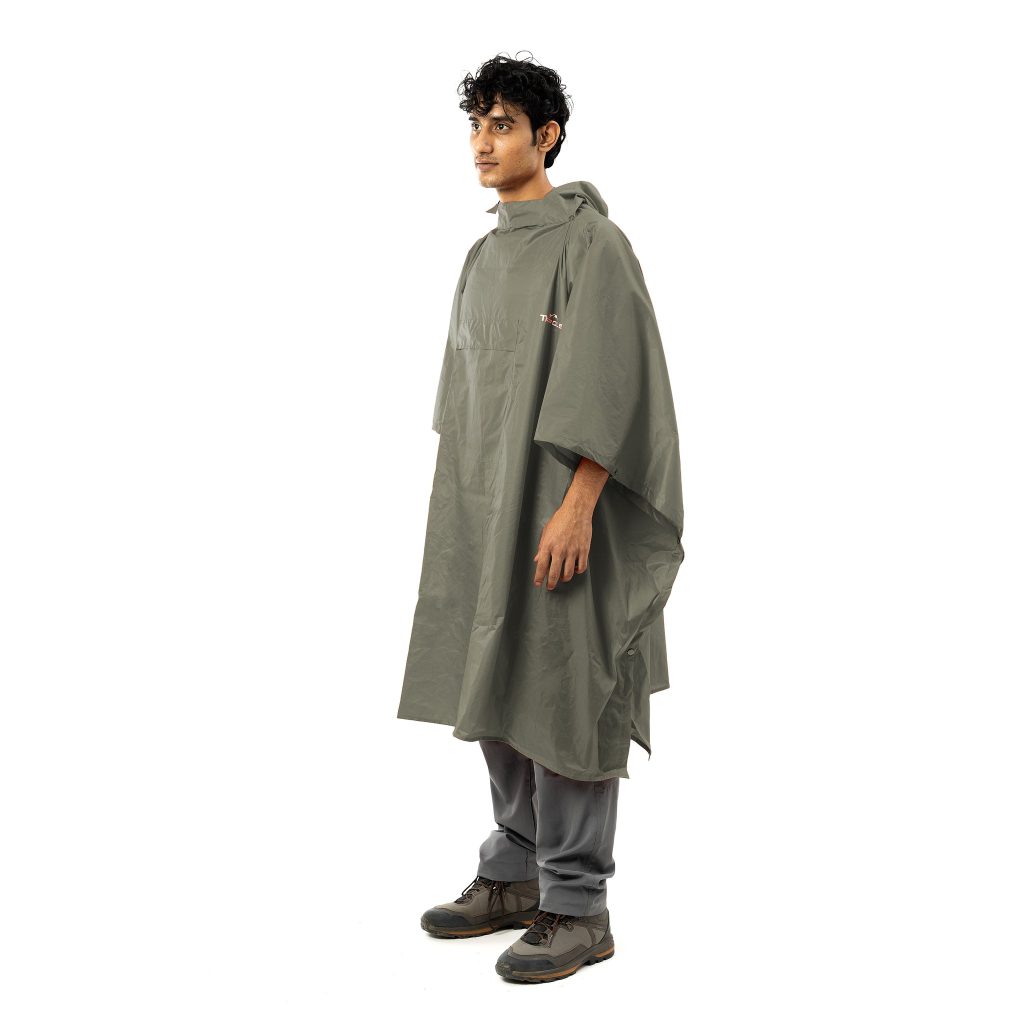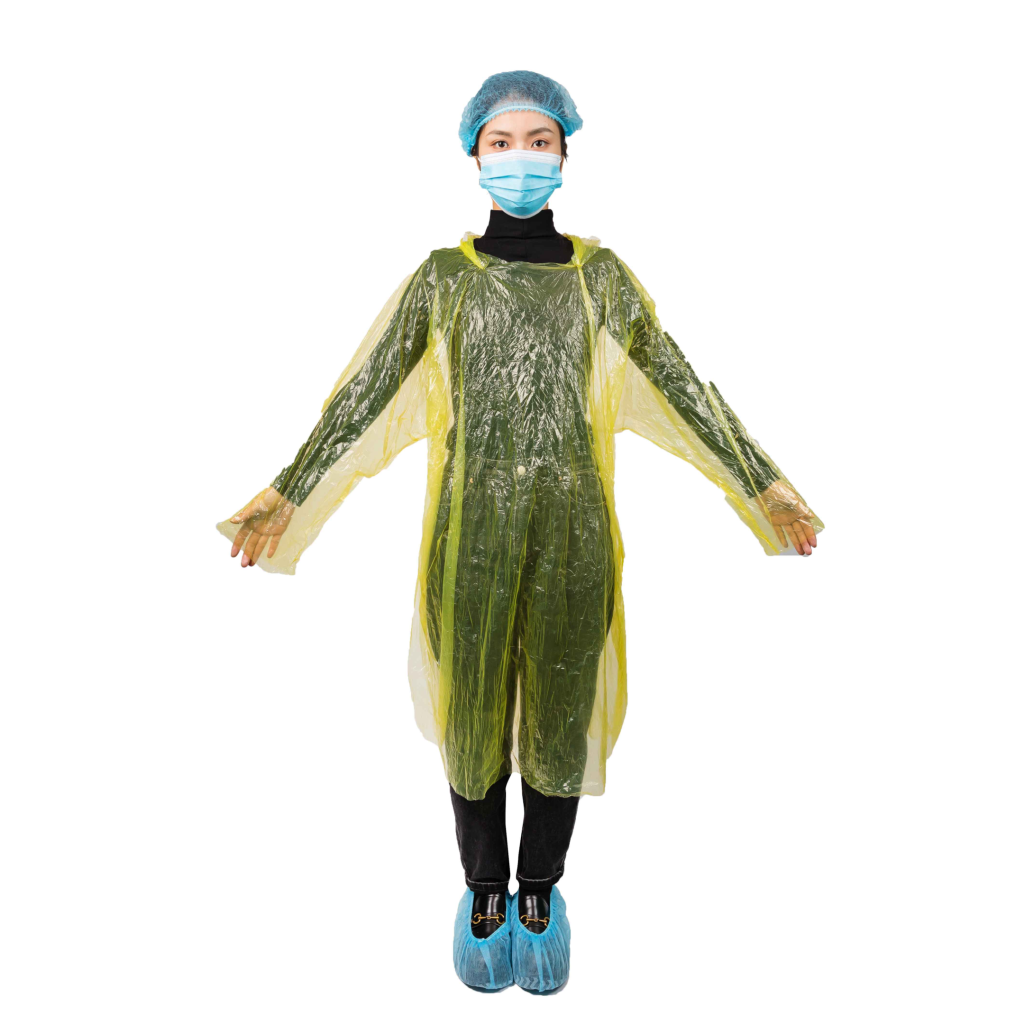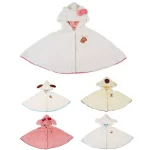Introduction
Poncho vs rain jacket – When it comes to staying dry during wet weather, two popular choices often come to mind: ponchos and rain jackets. Both have their own unique advantages and drawbacks, making the decision between them a matter of personal preference, the expected conditions, and the intended activity. In this detailed comparison, we will explore the features, functionality, and suitability of ponchos and rain jackets to help you determine which one serves as the better shield against showers for your needs.

Ponchos: The Versatile Cover-Up
Pros:
- Ease of Use: Ponchos are incredibly simple to put on and take off, often featuring a one-size-fits-all design with a head hole and sometimes sleeves. This makes them a great option for quickly throwing on over any outfit without the hassle of zippers or buttons.
- Coverage: Ponchos offer extensive coverage, not only protecting your upper body but also extending down to your thighs or knees, depending on the length. They can easily cover backpacks or bags you’re carrying, keeping your belongings dry too.
- Packability: Most ponchos are made from lightweight materials like polyester or nylon and can be folded or rolled into a compact size, taking up minimal space in your bag. This makes them a favorite among hikers and travelers who value minimal packing.
- Ventilation: Due to their loose fit, ponchos allow for good air circulation, reducing the likelihood of overheating, especially during physical activities.
Cons:
- Wind Resistance: Ponchos tend to flutter in windy conditions, which can lead to rain seeping in through the sides or underneath. They may also billow, affecting mobility and vision.
- Durability: Ponchos are generally less durable than rain jackets, especially if they’re made from thin materials. They may tear more easily on rough surfaces or when caught on branches.
- Fit and Functionality: The loose fit that provides excellent ventilation can also be a disadvantage when it comes to keeping out heavy rain or during strenuous activities where a snug fit is preferred.
Rain Jackets: The Technical Solution
Pros:
- Waterproofing and Breathability: Modern rain jackets often feature advanced technologies like Gore-Tex, which provide excellent waterproofing while still allowing sweat to escape, keeping you dry from both rain and perspiration.
- Wind Resistance: With their tighter fits and adjustable cuffs, hoods, and waists, rain jackets offer superior protection against wind-driven rain, ensuring you stay drier in harsher conditions.
- Durability: Constructed from more robust materials, rain jackets are designed to withstand wear and tear, making them suitable for rugged outdoor activities like hiking or climbing.
- Versatility: Many rain jackets come with additional features such as pit zips for ventilation, pockets for storage, and hoods that can be adjusted or removed, providing versatility for various weather conditions and activities.
Cons:
- Cost: High-quality rain jackets can be significantly more expensive than ponchos, which might be a consideration for those on a budget.
- Packability: While advancements have led to more packable options, rain jackets generally take up more space and weight than ponchos, making them less ideal for ultralight packing.
- Coverage: Rain jackets typically end at the waist or hip, leaving the lower part of your body exposed to rain unless paired with rain pants.
Choosing Between the Two
Ultimately, the decision between a poncho and a rain jacket depends on several factors:
- Activity: For light hiking or casual use where breathability and quick access are key, a poncho might be sufficient. For more intense activities or in harsh weather conditions, a rain jacket offers better performance and protection.
- Climate and Conditions: In areas with high winds or consistent heavy rain, a rain jacket’s wind resistance and snug fit are invaluable. For warmer climates or occasional light showers, a poncho’s ventilation and ease of use make it a more appealing choice.
- Budget and Space: If cost and minimal packing are priorities, a poncho’s affordability and packability win out. However, if you’re willing to invest in gear that offers long-term performance and versatility, a quality rain jacket is worth considering.

Breathability
Ponchos: Breathability is generally not a strong suit for traditional ponchos. The plastic or non-breathable materials used can lead to sweating and discomfort during physical activities. However, some modern ponchos are made with breathable fabrics to address this issue.
Rain Jackets: High-quality rain jackets prioritize breathability, allowing moisture vapor from your body to escape while keeping rain out. Technologies like Gore-Tex and eVent facilitate this process, ensuring you stay comfortable even during strenuous activities in wet conditions.
Mobility & Versatility
Ponchos: Ponchos offer a loose fit that allows for easy layering over thick clothing or backpacks, making them versatile for various activities. However, the excess fabric can be cumbersome, potentially hindering movement, especially during activities that require a full range of motion.
Rain Jackets: Designed for performance, rain jackets provide a snug fit that doesn’t restrict movement. Features like articulated sleeves and stretch panels enhance mobility, making them a preferred choice for hiking, climbing, or cycling.

Water Resistance
Ponchos: Ponchos are designed to cover a wide area. Typically extending from your head down to your knees or mid-calf. Ensuring that not only your upper body but also parts of your legs stay dry. They often come with a hood to protect your head and are made from waterproof materials like plastic or nylon. However, the open sides can let rain in if you’re exposed to strong winds or during active movements.
Rain Jackets: Rain jackets are tailored to fit closer to the body. Providing better overall water resistance due to their sealed seams, zippers. And often a waterproof breathable membrane like Gore-Tex. This design minimizes gaps where water could. Making them ideal for high-intensity activities where you’re more likely to encounter splashes or heavy rain.
Weight & Packability
Ponchos: Ponchos typically weigh less and are more packable than rain jackets. They can be easily folded into a compact size, taking up minimal space in your backpack. Which is particularly beneficial for travelers or hikers who value minimalism.
Rain Jackets: While advancements in material technology have made rain jackets lighter and more packable. They still tend to be bulkier and heavier than ponchos. Nevertheless, many high-end models are designed to fold into their own pockets for convenient storage.
Style & Fashion
Ponchos: Ponchos have a distinct style that can add a touch of casual charm to your outfit. They come in various colors and patterns, making them a fashionable accessory for music festivals or casual strolls.
Rain Jackets: Rain jackets offer a wider range of styles, from sporty to urban chic,. Catering to diverse tastes and needs. With features like adjustable hoods, cuffs, and hemlines. They allow for a personalized fit and can be worn as part of a daily outfit beyond just rainy weather.
Conclusion
Choosing between a poncho and a rain jacket ultimately depends on your specific needs. The type of activity you’ll be engaging in, and your personal preferences. Ponchos excel in terms of lightweight packability and versatility, making them great for casual outings or when carrying extra gear. Rain jackets, on the other hand, offer superior protection, breathability, and mobility. Which are crucial for more intense or prolonged outdoor activities. By weighing these factors. You can make an informed decision that ensures you stay dry and comfortable while enjoying all that nature has to offer, rain or shine.


